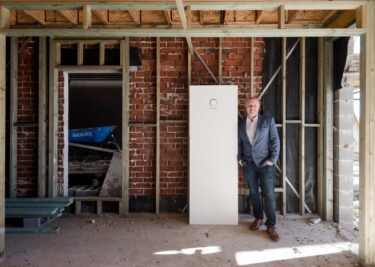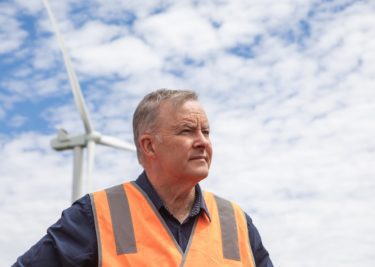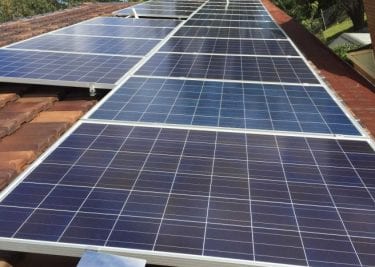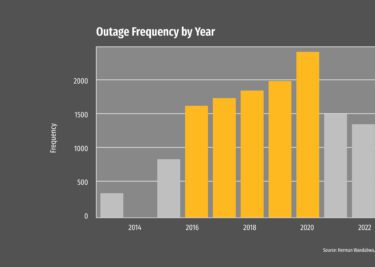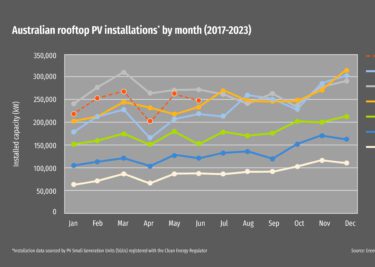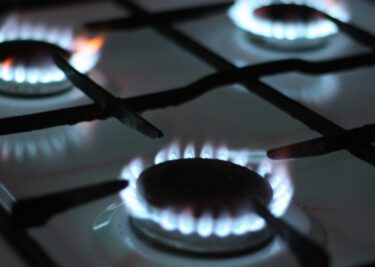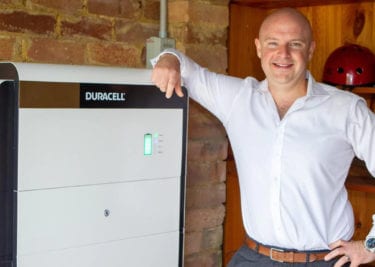Electric vehicles (EVs) have gone from boxy to cool in just a few years – even government ministers are now lining up for photo ops behind the wheel. But how effective are EVs for decarbonisation? And how can EVs integrated with solar, and vehicle to grid technology, help us make the switch from fossil fuels to renewable energy?
The world is electrifying, and the transport sector is coming along for the ride. According to the International Energy Agency’s (IEA) “Global EV Outlook 2021”, EV registrations increased by 41% in 2020, despite the impact of the Covid-19 pandemic which resulted in a 16% decline in overall car sales. The IEA is hardly a bunch of EV optimists, but even its most conservative “Stated Policies Scenario” forecast for global energy dynamics see EVs comprising 7% of the world’s real vehicle fleet by 2030 – though its more ambitious, and likely, forecasts is for EVs to hit 12%, representing 230 million vehicles.
More people are buying EVs now than ever before, and that number is taking off like a Tesla Model 3. Why? Simply because there are more reasons to switch to an EV. One such reason is that the price of EVs has fallen dramatically, while simultaneously, persistently high oil prices make the trip to the servo to fill up an Internal Combustion Engine (ICE) vehicle is an increasingly painful proposition.
According to the Australian Institute of Petroleum, the national price of unleaded petrol is at a 13-year high. In Sydney, all-time highs of 172.5 cents/litre have been reached on average. That is a scary figure, especially if you can remember the days when former Australian Rugby League player Petero Civoniceva’s nickname was “Petrol’s seventy-cents-a-litre” – and not just because it rhymed.
Another reason is that EVs are continually improving well-to-wheel greenhouse gas (GHG) emissions. Of course, we all know EVs produce zero-emissions at the tailpipe, but EV production is carbon-intensive. Filling up on electricity that is generated from coal and gas is also far from carbon free.
However, as the IEA states, the emissions savings of EVs are already much better than ICE alternatives, with the advantage only “increasing over time.” Dutch researcher, who is informally regarded at the world’s number one “EV myth debunker in chief” Auke Hoekstra has found that battery electricity vehicles (BEVs) reduce emissions from 244 to 98g/km when powered by a conventional grid. When considering a fully renewable system, which Australia and other countries are making good progress in moving towards, this figure could decrease to 10g/km.
So, if you are like the three million other Australians who have solar panels on your rooftop, and a growing number with home batteries too, then a significant portion of your EV’s charge is entirely emission-free. And once your rooftop solar has paid for itself in electricity savings, entirely free of charge.

Solar + Storage + EV Integration
The combination of rooftop solar, home battery and an EV is a proven tool of decarbonisation, not only does it send a signal throughout the wider energy and transport sectors, but the three-punch combo significantly contributes to the reduction of your own carbon footprint, and the cheap cost per km isn’t a bad bonus either.
Unless you’ve installed an undersized rooftop solar system, most households can charge their EVs with at least 50% solar energy, and much more with a home battery system. According to Solar Quotes, the cost of petrol is six times higher than charging your EV with 50% rooftop solar and 50% grid energy in Brisbane and Melbourne. And Rewiring Australia’s Saul Griffith’s research has found that if Australians charged their EVs with their rooftop solar and home battery systems, they would save approximately 67% in fuel costs by 2030.
Despite these clear advantages, EV uptake has been slow in Australia compared to other countries. The Federal Government, following on from the state governments of New South Wales (NSW) and Victoria (VIC), recently released its long-awaited EV strategy. The new policy will see an additional $178 million for the Future Fuels Fund to put towards charging infrastructure, heavy and long-distance vehicle technologies, commercial fleet transitions and household smart charging.
The Morrison government’s modelling predicts that 30% of new car sales will be EVs by 2030, and in the Prime Minister’s speech he repeatedly pointed to Australia’s “world-leading rooftop solar uptake” as both a comparison and a foundation for EVs.
The NSW government’s plan sees it pledge double the sum the federal government has promised to support EV uptake, and along with Victoria is targeting 50% of new vehicle sales to be EVs by 2030.
Vehicle to grid
Another reason to switch to EVs in combination with your rooftop solar and home battery system is the emerging vehicle-to-grid (V2G) technology. EVs are basically batteries on wheels, and not small batteries either. An EV battery is typically three to four times the size of a standard residential solar battery. And since the majority of time our cars are idle or plugged in, your EV battery can combine with others to form an enormous storage system which can supply energy to the grid at peak times when wholesale electricity prices are high.
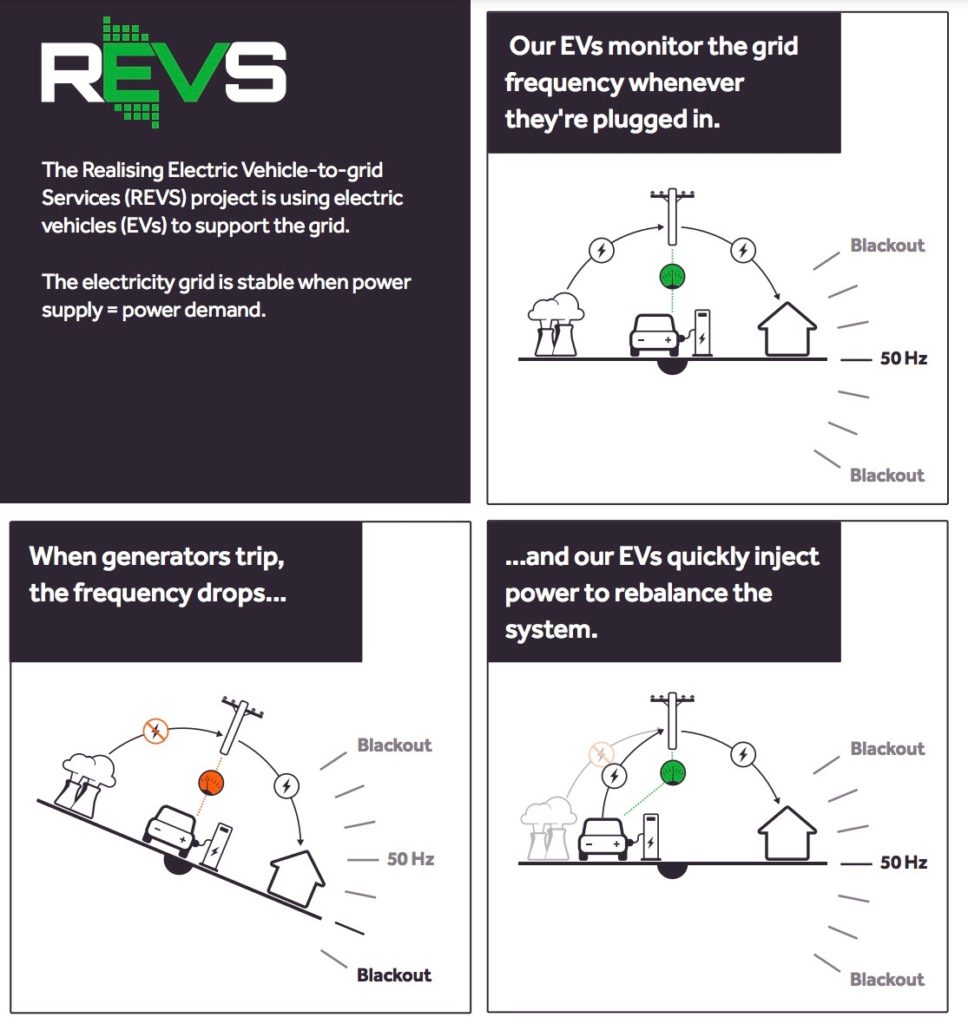
V2G provides an opportunity for grid operators to help balance the electricity network. These companies and regulators responsible for keeping the lights on can draw on electricity stored in many hundreds or thousands of EVs when they’re plugged in, to make up for increases in electricity demand, or for short-term instabilities in the system. And for rooftop solar and EV owners they would be paid by the grid operators for the privilege, allowing them to cash in on services their cars are providing simply by plugging their solar-charged EV in after work – which is also when the grid is under the most demand pressure.
Admittedly, we’re not quite there yet with V2G on an infrastructure, policy and market basis. But the technology, called “bi-directional charging”, is there and as the number of charging stations and EVs continue to grow, the potential for a win-win for car owners, solar households and the grid is plain to see.
Around the world, experts are touting V2G as a serious game-changer, especially since EV uptake will necessarily increase the amount of electricity drawn from electricity networks. The Australian National University (ANU) began V2G trials last year, and now that “bi-directional chargers” have been certified in Australia, and more Australians are coupling their solar systems with residential batteries, the trend looks set to take off.
Bjorn Sturmberg, research leader at ANU’s Battery Storage and Grid Integration Program, calculated that if all of Australian’s 19 million cars were EVs, they would have the combined power of 10,000 Tesla Big Batteries like the one in Hornsdale, South Australia. That’s a big battery, a lot of power and a pretty cool development.

